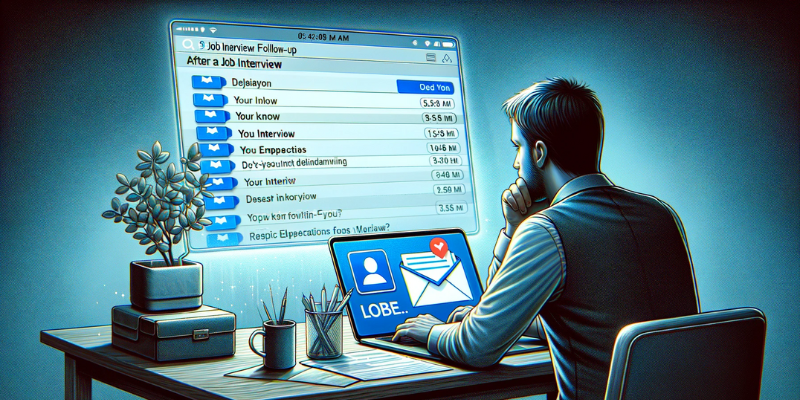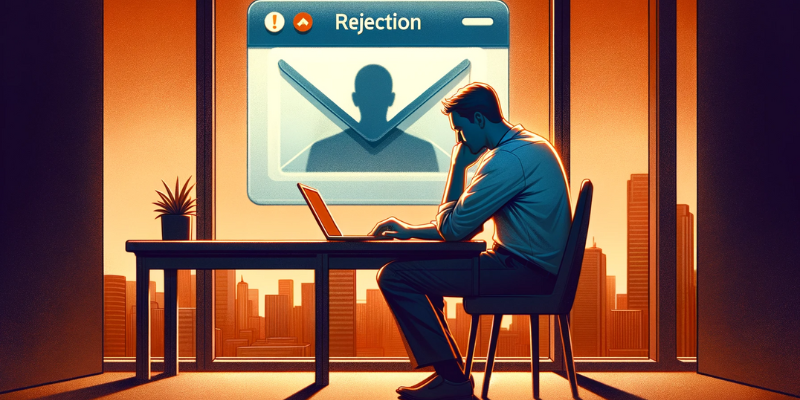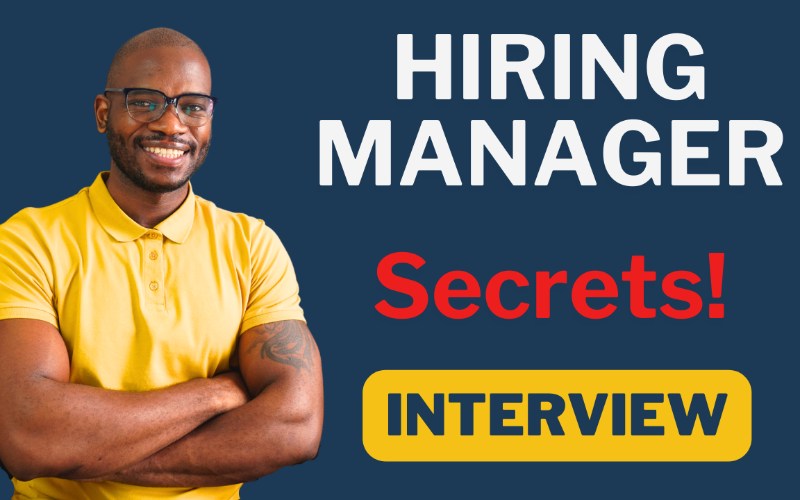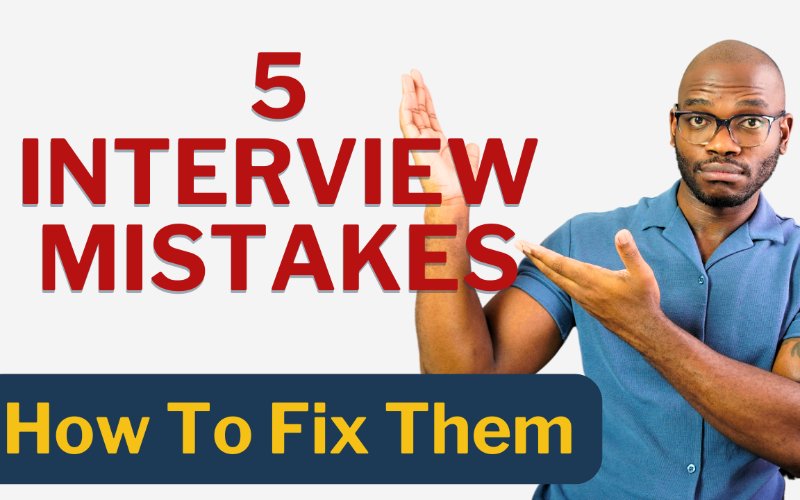Mastering the art of the post-interview follow-up is crucial for job seekers. Knowing how to express continued interest in a position, without overstepping boundaries or appearing desperate, is a fine line to walk. This guide will take you through each step of the process, from laying the groundwork during your interview to crafting the perfect follow-up message, and how to interpret and respond to various types of feedback from potential employers.
Table of Contents

Introduction
Understanding the Importance of Post-Interview Follow-Up
The period after a job interview is often filled with anxiety and anticipation. One crucial aspect of this stage is the follow-up. A thoughtful, well-timed follow-up can demonstrate your enthusiasm for the role, show your commitment, and keep you at the forefront of the hiring manager's mind. However, it's important to strike the right balance to ensure that your eagerness doesn't come across as pushiness or desperation.
Overview of Post-Interview Etiquette
Following up after an interview is not just about reminding the employer of your existence; it’s an opportunity to reinforce the impression you made during the interview and to show that you are a courteous and professional candidate. The right follow-up strategy can make the difference between landing the job and being forgotten.
Setting the Foundation for Follow-Up
During the Interview: Laying the Groundwork
Before the Interview Ends
-
Ask About Next Steps: Inquire politely about the next steps in the hiring process. This shows your interest and helps you gauge the timeline for follow-up.
-
Express Your Interest in Following Up: Let the interviewer know you appreciate the opportunity and look forward to any updates.
After the Interview
-
Send a Thank You Note: Within 24 hours, send a personalized thank you email. Express gratitude for the opportunity and reiterate your interest in the position.
Right After the Interview: Key Actions
-
Reflect on the Interview: Make notes about key points discussed, any names mentioned, and how you can reference these in your follow-up.
-
Plan Your Follow-Up Strategy: Based on the interviewer's feedback, decide on the method and timing of your follow-up.
Case Study: John, a marketing specialist, interviewed for a job and sent a thank-you email mentioning a specific marketing strategy discussed during the interview. This personalized approach kept the conversation going and showed his genuine interest in the role.
Fact: According to a survey, 57% of interviewees do not send a thank-you note after an interview, missing a crucial opportunity to stand out.
Table: Ideal Timings for Post-Interview Actions
|
Action |
Ideal Timing |
|---|---|
|
Thank You Email |
Within 24 hours |
|
First Follow-Up |
5-7 days after interview |
|
Second Follow-Up |
10-14 days after interview if no response |

The Art of Crafting Follow-Up Communications
Timing Your Follow-Up
-
First Follow-Up: Send 5-7 days after the interview. This shows your interest while giving the employer time to process their decision.
-
Subsequent Follow-Ups: If no response, a polite follow-up every 7-10 days is reasonable.
Writing Effective Follow-Up Emails
Subject Line: Keep it clear and related to the position you interviewed for, e.g., "Follow-up on [Position] Interview".
Opening: Address the recipient by name and thank them again for the opportunity.
Body:
-
Express continued interest in the role.
-
Reference a specific part of the interview to remind them of your conversation.
-
Reiterate how your skills and experience align with the job requirements.
Closing: Politely inquire about the status and mention your availability for further discussions.
Alternative Follow-Up Methods
-
Phone Calls: Use if the interviewer suggested calling or if it's common in your industry.
-
LinkedIn Messages: Ideal for less formal follow-up or if you've interacted with the interviewer on LinkedIn before.
Table: Components of an Effective Follow-Up Email
|
Component |
Description |
Example |
|---|---|---|
|
Subject Line |
Clear and related to the position |
"Follow-Up: Marketing Manager Interview" |
|
Opening |
Personalized and grateful |
"Dear Mr. Smith, thank you again for the opportunity..." |
|
Body |
Express interest, reference interview, highlight suitability |
"Our discussion about digital marketing strategies was particularly exciting to me, as..." |
|
Closing |
Inquiry about status, availability |
"Could you kindly provide any updates on the process? I am available for further discussions..." |

Navigating Follow-Up Scenarios
If You Haven’t Heard Back: Next Steps
Second Follow-Up: If there’s no response after the first follow-up, wait another week before reaching out again. Keep this message brief and polite, reiterating your interest and asking for any updates.
Persistence vs. Patience: Be persistent but respectful. If there’s still no response after two follow-ups, consider pausing and reassessing your approach.
Responding to Different Types of Employer Feedback
Positive Response: If the feedback is positive, express your gratitude and readiness for the next steps.
Neutral or Non-Committal Response: Respond with a message that shows your continued interest but also respect for the process.
No Response or Rejection: It's okay to ask for feedback. If none is provided or if it's a rejection, thank them for the opportunity and express your hope to keep in touch.
Tips for Responding to Different Employer Feedback:
-
Positive Response:
-
Thank the employer.
-
Reaffirm your interest and availability.
-
-
Neutral Response:
-
Acknowledge their update.
-
Politely reiterate your continued interest in the role.
-
The Psychology Behind Follow-Ups
Understanding the Employer's Perspective
The Decision-Making Process: Employers often have multiple candidates and internal processes, which can extend the time for decisions.
Balancing Interest and Professionalism: Employers appreciate follow-up as it shows interest, but overdoing it can be a turn-off.
Maintaining Confidence and Patience
Handling the Waiting Period: Use this time to reflect on your interview performance and consider areas for improvement.
Staying Positive: Keep a positive mindset. Engage in activities that boost your confidence, like networking or skill-building.
Quote: "Patience, persistence, and perspiration make an unbeatable combination for success." – Napoleon Hill
Ways to Stay Positive During the Waiting Period:
-
Reflect on Your Interview Performance
-
Analyze what went well and areas to improve.
-
-
Continue Networking
-
Attend industry events or meetups.
-
-
Enhance Your Skills
-
Take online courses or workshops relevant to your field.
-
-
Stay Active in Your Job Search
-
Keep applying to other positions and attending interviews.
-

When to Move On
Recognizing When It’s Time to Stop Following Up
-
Lack of Response: If you've sent multiple follow-ups with no response, it might be time to move on. Continued silence can be an indirect way of saying the company has chosen another candidate.
-
Rejection: If you receive a clear rejection, respond with professionalism, thanking them for their consideration and expressing your hope to keep in touch for future opportunities.
Learning from the Experience
-
Seeking Feedback: If possible, politely ask for feedback on your interview performance to learn for future applications.
-
Reflecting and Adjusting: Use this experience to refine your interview and follow-up strategies. Reflect on what worked well and what could be improved.
Table: Indicators It's Time to Move On
|
Indicator |
Explanation |
|---|---|
|
Multiple Unanswered Follow-Ups |
Indicates lack of interest or decision for another candidate |
|
Direct Rejection |
Clear signal to focus on other opportunities |
Quote: "Failure is simply the opportunity to begin again, this time more intelligently." – Henry Ford
Conclusion
Successfully following up after a job interview without being pushy is a skill that can greatly influence your job search success. It involves understanding the fine line between showing enthusiasm and overstepping. The key is to communicate effectively, be patient, and maintain a professional demeanor throughout the process. Remember, each interaction with a potential employer is an opportunity to reinforce your interest and fit for the role, while also respecting the employer's decision-making timeline.
Additional Resources
For further guidance and templates on post-interview follow-ups, consider exploring these resources:
-
Books:
-
"Knock 'em Dead Job Interview" by Martin Yate
-
"The 2-Hour Job Search" by Steve Dalton
-
-
Online Courses:
-
LinkedIn Learning: Interviewing Skills
-
Coursera: Successful Interviewing
-









